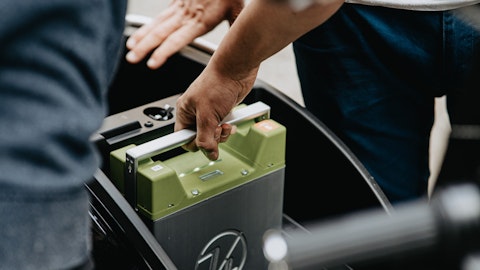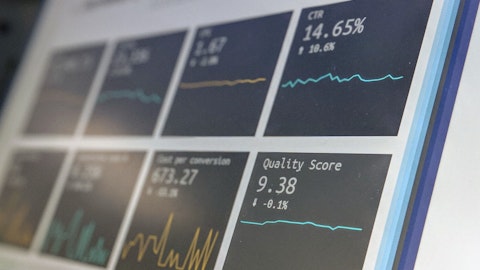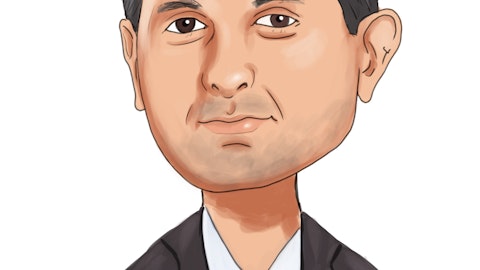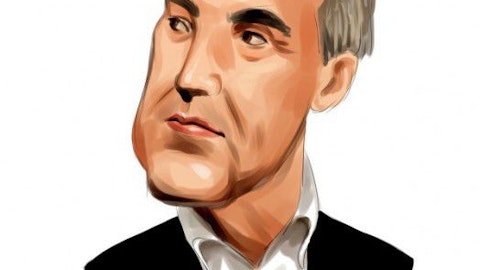ATI Inc. (NYSE:ATI) Q4 2022 Earnings Call Transcript February 2, 2023
Operator: Good morning. My name is Lauren and I’ll be your conference operator today. At this time, I would like to welcome everyone to the ATI Q4 2022 Earnings Call. All lines have been placed on mute to prevent any background noise. A supplemental slide presentation to accompany the prepared remark can be found on the company’s website. After the speaker’s remarks, there’ll be a question-and-answer session. At this time, I would like to turn over the call to Tom Wright, the Vice President, Investor Relations and FP&A. Tom, you may begin your conference.
Tom Wright: Thank you. Good morning and welcome to ATI’s fourth quarter 2022 earnings calls. Today’s discussion is being broadcast on our website. Participating in today’s call are Bob Wetherbee, Board Chair, President and CEO; and Don Newman, Executive Vice President and CFO. Bob and Don will focus on our fourth quarter and full year highlights and key messages. Before starting our prepared remarks, I want to draw your attention to the supplemental presentation that accompanies this call. Those slides provide additional color and details on our results and outlook and can be found on our website ATImaterials.com. After our prepared remarks, we’ll open the line for questions. As a reminder, all forward-looking statements are subject to various assumptions and caveats. These are noted in the earnings release and in the slide presentation. Now I’ll turn the call over to Bob.
Bob Wetherbee: Thanks, Tom. Good morning and thanks for joining us. We ended the year strong. ATI’s quarterly revenue, once again topped a $1 billion. That’s the second quarter in a row, we achieved this milestone. We ended the full year at a run rate of $4 billion in revenue, 37% higher than 2021. We’re executing expertly against robust markets. We’re meeting our commitments and getting better every day. Today I’ve summarized our performance in four key headlines. Headline one; we’re achieving what we set out to do. In the fourth quarter, we delivered adjusted EBITDA of $140 million. This was driven by continued strength in our core aerospace and defence markets. Adjusted EPS of $0.53 surpassed the midpoint of our November guidance.
The team is laser-focused on execution and it shows in our results. On a full year basis, ATI adjusted EBITDA was $549 million or 14% of sales and almost 400 basis point increase over 2021. Adjusted earnings per share was $1.99. We generated $148 million in free cash flow. Don will dive deeper into the financials in a few minutes. Headline two. Our deliberate actions and transformation are delivering the results we projected. It comes down to our team, our capabilities and optimizing our business with discipline. Let me add a little color here starting with our team. As 2022 began, we were on the frontlines of the war for talent, hiring nearly 1,000 new team members during the year. Now with our workforce largely in place, we’re focused on accelerating.
Our team is quickly moving up the learning curve, now cross-qualifying from one job to multiple jobs to gain flexibility. Their productivity and proficiency grow every day. To those 1,000 new employees, I say, you made a great decision to join ATI. We look forward to performing together and to our entire team, thank you for your hard work and focused efforts. You are driving ATI’s success. Next up, our capabilities; we’re optimizing our existing footprint to increase opportunity. When it comes to titanium and nickel melt, we’re focused on two things; first, operational efficiency to increase output, and second, increasing inventory velocity. Some more color on titanium specifically. Russia’s invasion of Ukraine has structurally disrupted the global titanium supply chain.
An outcome of this tragic situation is the most significant titanium opportunity in years. Titanium product lead times have grown from eight weeks, just a few quarters ago to 60 weeks to 70 weeks today. We’re operating with a disciplined controlled order entry process that leads to optimal use of our capacity. Last quarter, we shared our plans to increase near-term titanium melt capacity for aerospace and defence applications by 25% using our existing assets. Now we’re revising this plan upward based on overwhelming customer commitments here in that the word contracts, we’re increasing near-term capacity, not just by 25%, we’ll increase by 35%. That’s over the 2022 baseline. It requires only nominal CapEx, less than $10 million, which is included in our CapEx guidance.
Clearly, demand is growing and the team is responding and we’re responding quickly. It’s been a busy 90 days. We’ve restarted a melt shop in Oregon, melting the first ingots a few weeks ago. It was actually out there last week. Put my hands safely on. It feels great to see the output. We expect production to ramp through the first half of 2023 and we’ll start to see benefits from that capacity in the second half of this year. On top of that, our previously announced brownfield investment to further increase long-term titanium milk capacity is on track to produce first ingots by the end of 2024. Customers are committing to this capacity as well. This brownfield investment is within the scope of previously provided capital estimates. It’s crucial to ATI’s ability to meet the significant long-term titanium demand.
Those of you listening to this call likely aren’t the people placing orders for titanium these days, but you probably know some people that are and if you’re speaking to anyone about it, my advice is to get those remaining contracts signed up soon. There’s very little soon. There’s very little capacity in 2023 that’s unspoken for and that’s increasingly true for 2024 and beyond. Some of our product lines actually have started customer commitments and bookings in early 2025. So it’s a tight market. The specialty rolled products business transformation and footprint consolidation is nearly complete. We’re on track to produce first coils at the new bright anneal furnace in Vandergrift, Pennsylvania, in the next 90 days. Full qualification and production will come soon after.
This bright anneal furnace provides our customers with state-of-the-art sheet finishing capabilities and optimizes our operating footprint to significantly streamline production flow pass. My third headline today; we’re performing in growing markets, especially our aerospace and defence core. Our repositioning to an aerospace and defence leader is well on its way. In the fourth quarter, our overall product mix attributed to aerospace and defence increased to 53% of total sales, up 12 points over the same period last year. In reality and for clarity, I think we have a good shot to see our A&D product mix go north of 60% by the back half of 2023. The progress we’ve made is really great and continues and we’re well on our way to the 65% goal we’ve discussed with you guys earlier.
Why is this important? These markets offer premium growth rates and higher margins compared to commoditized products and markets. Those factors provide great opportunity for ATI to generate cash and create shareholder value. It’s worth noting that quarter-over-quarter jet engine and airframe sales were flat versus Q3. We attribute this primarily to efforts across the supply chain to control year-end inventory. This was accentuated by planned shutdowns and intentional order recalibrations in the near term to increase the industry’s supply chain reliability for the longer term. We expect a strong growth trend to resume in the first quarter. The momentum in our core markets is driving profitable growth across the enterprise. In our HPMC segment, Q4 sales of commercial aerospace products increased by 85% compared to the prior year.
Total aerospace and defence sales comprised 83% of HPMC revenue in the fourth quarter. Year-over-year, total HPMC segment sales climbed by over 40%. EBITDA margins expanded over 400 basis points. The strong operating margin growth reflects higher sales of next-gen jet engine products as well as higher operating levels. In the AA&S segment, commercial aero sales grew by 113% versus the prior year. Total A&D sales were over 30% of that segment’s Q4 revenue. This mix improvement, along with the ongoing efficiency benefits of our transformation, drove a 30% increase in full year total AA&S sales. EBITDA margins improved by over 300 basis points versus 2021, a clear indication to me, and hopefully to you, that our transformation is paying off. Headline number four, the modest headwinds we’re experiencing impact only a minor portion of our business, and that portion continues to get smaller.
We see some recessionary softness in construction, mining and general industrial end markets. The good news, due to our transformation, a little more than 15% of our AA&S segment is exposed to those headwinds. That’s a much smaller portion than in the past. We continue to face near-term softness in our Asian Precision Rolled Strip business. There’s a lot of uncertainty there. While we see some positive signals, we’re forecasting this business to remain at current levels or even modestly contract until we see a clear upward trend. What I can say for sure, we’ll be ready when Asian demand picks up. Okay. Let’s go to a quick review of our markets and what we see heading into 2023. These can be found on Slide 4 in the accompanying slides on our website.
In commercial aerospace, as I mentioned earlier, we’re in the most significant production ramp this industry has seen in several decades. ATI’s 2022 jet engine sales doubled from the prior year, an astounding ramp rates. 2022 airframe sales grew 79% versus 2021. Recovery of the airframe market for ATI has lagged at engine throughout 2022. But looking ahead, that’s changing. We’ve been watching for two signals to indicate the commercial aerospace market is at a critical positive inflection point. With some analysts, we’d call growth catalysts. I’m pleased to report we’ve seen both in recent weeks. On the narrow-body side, we’ve been awaiting increased clarity on future 737 MAX demand. December’s mega order from India is a big step toward reducing inventory.
Add to that, the Chinese Aviation Authorities declaration in January that the MAX is approved to return to service. And then just this week, Boeing announced a fourth 737 MAX assembly line in Everett, Washington. These are growth catalysts, number one. The second signal we’ve been watching for the resurgence of 787 production on the wide-body side. United Airlines order of 100 Boeing 787s was clearly good news on this front and reinforces exactly what we’ve been anticipating, even a little earlier than we expected. Positive growth catalyst, number two. We expect ATI airframe product shipments to accelerate throughout 2023. In our other core markets, defence, growth in global spending continues to create significant opportunities for ATI. In the near term, we’re seeing a record level of demand for products like titanium armor going into new military vehicles.
In the fourth quarter of 2022, ATI Defence sales grew 18% versus Q4 of 2021. The sequential increase was driven largely by accelerated support for the Navy’s carrier and submarine fleets and increased shipments for military rotorcraft applications. We expect 2023 defence sales to be strong in these subsectors as well as ground vehicle armor and military aircraft. I think most of us saw the news of the Allied Nations sending tanks to support Ukraine. I think it’s just one more reminder of how quickly things have escalated in terms of demand for defence materials. We expect that demand to be sustained for multiple years based on all the signals that we’re getting from the federal government. In addition to our core A&D markets, we leverage our expertise to critical adjacent applications with aero-like characteristics.
This includes specialty energy, medical and electronics. We’re seeing growth in these markets, too. A little more color about these is on Slide 4 of the accompanying presentation on our website. I’ll now turn the call over to Don to walk through financials and guidance. So I’ll be back after that to conclude and take us into Q&A.
Don Newman: Thanks Bob. Today, I’ll share details on 3 areas of ATI’s performance. One, our 2022 Q4 and full year results; two, the 2023 outlook; and three, updates on the 2025 targets shared during our investor conference. Let’s start with highlights of our Q4 performance. As Bob noted, Q4 marked our second consecutive quarter with over $1 billion in revenue. Not only are sales up, we’re on track with our strategy of shifting product mix to value-add. Aerospace and defence sales were 53% of total revenue in Q4, that’s up from 51% in Q3 and up 1,200 basis points from Q4 2021. Q4 2022 EBITDA margins were 13.9% compared to 12.4% in Q4 2021. Value-add sales mix, increased production levels and diligent cost management all contributed to the margin percentage expansion.
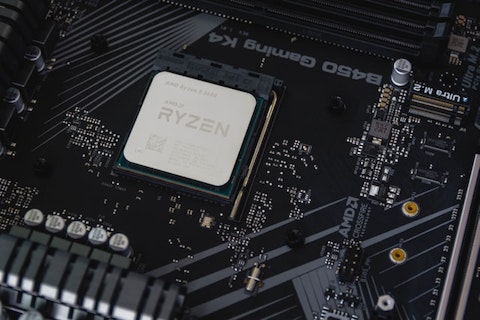
Photo by Christian Wiediger on Unsplash
Fourth quarter EPS was $0.53, $0.01 higher than the midpoint of our guidance range. As we dig further into our performance, I’ll highlight a few of the key takeaways as we see them. First, as you can clearly see in our numbers, sales are growing in the differentiated markets where we are valued the most. Secondly, we’re improving profitability. Our significantly higher adjusted EBITDA reflects the benefits of our business transformation. Full year 2022 adjusted EBITDA was $549 million, an increase of $258 million and 89% from 2021. Compared to full year 2019, EBITDA increased 25% on revenue that is nearly $300 million below 2019 levels. Full year 2022 adjusted EBITDA margins were 14.3%. That’s nearly 400 basis points better than 2021 and 360 basis points higher than 2019.
These significant improvements reflect the impact of our transformation, structural cost reductions and continued focus on mix and price improvement. What else contributed to the year-over-year gains volume growth, increased metal prices, $34 million in COVID incentives and $10 million in tariff refunds. Those COVID incentives, by the way, helped to offset operating efficiencies as we hired and trained nearly 1,000 new workers. Pass-through revenues due to metal volatility dampened margin percentage performance since they typically generate little or even zero profits. Otherwise, we would have delivered even better margin percentages in 2022. 2022 adjusted EPS was $1.99, up from $0.13 per share in 2021. We recognize that cash generation is key to value creation.
In 2022, we generated $148 million of free cash flow compared to our guidance of greater than $90 million. It is also significantly higher than our 2021 free cash flow of $6 million. Third, I want to share progress on two contributors to value creation, working capital and CapEx. We ended the year with managed working capital at 30% of revenue. Last quarter, I shared that we were targeting working capital to be in the low 30s by the end of 2022 and expected to hit our 30% target in 2023. The operating teams continue to amaze, outperforming expectations and hitting the 30% working capital target sooner than planned. It benefited 2022 cash generation and liquidity, and positions us for additional future improvements. One more note on working capital.
In Q4, customers made advanced payments to lock in their 2023 production slots. This is another signal of strong titanium and nickel demand. This served to pull forward approximately $30 million of 2023 cash flow into Q4. When it comes to we continue to maintain strict discipline. Capital expenditures totalled approximately $130 million in 2022. We also accrued $38 million for capital items at year-end. This was due to supply chain equipment delays and resulting timing of payments. The accrued capital items will roll into 2023 CapEx. Even so, we expect to keep 2023 CapEx within the $250 million target we set in our last February’s investor conference. More on that in a minute. The fourth key takeaway to highlight our strong balance sheet, which provides a stable foundation for value creation.
We closed out 2022 with more than $1.1 billion of liquidity. That includes $584 million in cash and $538 million available under the ABL facility. The net debt ratio was 2.2x at the close of 2022, down from 4x at the beginning of the year, great headway on our goal to delever the balance sheet. When it comes to pension, we are now 88% funded on a GAAP basis. Our net pension liability at the end of 2022 was $219 million, down from $396 million at the end of 2021. What accounts for the drop in that liability? Increases in discount rates and company contributions, offset by negative asset returns. The 20% negative asset returns in 2022 reflect pullback in the broader financial markets. Asset returns and discount rates can change from period to period, but I want to be clear, we remain focused on executing the pension glide path.
Our strategy remains the same, and we are advancing. We are near completion of our current stock buyback program. In 2022, we repurchased 5.2 million shares for a cash cost of $140 million at an average price of roughly $26.92 per share. We have $10 million remaining on the current Board approved program. Now let’s talk about full year 2023 outlook. You’ll see our targets captured on Slide 9 of the accompanying presentation on our website. Bob painted a clear picture of our markets. Bottom line for 2023, it will be another year of robust, meaningful growth driven by strong and growing markets. The demand is there. While inflation and supply chain challenged us, we successfully offset the impact in 2022 through pricing actions, pass-throughs and capturing offsetting efficiencies.
While inflation seems to be slowing and the supply chain is normalizing, a degree of uncertainty is still expected in 2023. With the team well practiced and taking quick and deliberate action, we believe we can achieve similar success in offsetting negative factors. Postretirement benefit costs, which include pension and OPEB expense, will increase the net $36 million in 2023. That’s within the estimated $30 million to $40 million range shared in our last earnings call. The expense increase is largely due to changes in actuarial discount rates and negative asset returns in 2022. The additional expense will not impact 2023 contributions to the plan. As a matter of fact, we made our 2023 voluntary contribution of $50 million earlier this week, planned on another $50 million contribution in 2024 as planned.
We have made tremendous progress on the pension in recent years. Since 2013, total plan participants have declined more than 62% and there are now fewer than 900 active participants. We have also worked out net liabilities, executed numerous annuitization transactions and made voluntary contributions to the plan. We have a clear objective, execute the glide path strategy to eliminate pension impacts. Now what are EPS expectations for 2023? We expect 2023 adjusted EPS to be in the range of $2 to $2.30 per share. That includes a $0.24 impact from the postretirement expense increase. Nonrecurring items in 2022 and the increased postretirement expense in 2023 can impair visibility of our underlying EPS growth year-over-year. Removed from the equation impacts of COVID incentives, tariff refunds and the incremental postretirement expense, the result, underlying EPS is increasing roughly 40% year-over-year at the midpoint of our 2023 guidance.
That’s the bottom line about earnings. Now how are we thinking about cash generation? We expect full year 2023 free cash flow to be between $125 million and $175 million. As I shared, we generated $148 million of free cash in 2022. Now adjust for the $30 million of cash pulled forward by customers prepaying for production slots. That brings our 2022 free cash flow to roughly $120 million, closer to where we previously guided. Now think about the impact of 2023. Our 2023 free cash flow would have been $30 million higher than the present guidance. Again, let’s remove the noise to understand the underlying growth. 2023 free cash flow at the midpoint of the range is essentially 50% higher than 2022 once you consider the impact of customer prepayments in Q4.
We made solid progress improving working capital efficiencies in 2022, hitting our 30% target during a dynamic growth period. In 2023, we expect to make incremental improvement on our 30% working capital level. Overall, we expect managed working capital to be a $100 million use of cash in 2023, give or take. That magnitude is similar to the overall cash impact we saw from managed working capital in 2022. We anticipate 2023 capital expenditures will be in the range of $200 million to $240 million, including the $38 million carried over from 2022 into 2023. The high end of our range is still below the $250 million CapEx placeholder we shared at our investor conference. We are carefully managing our maintenance capital spend to ensure assets are in ramp ready condition.
Our 2023 CapEx includes capital for the titanium melt brownfield expansion project and 35% production increase from existing assets. I do want to reinforce that this incremental capacity is largely committed under existing contracts. And as a reminder, we target returns of 30% or greater on growth projects. Let’s talk about Q1. For the first quarter, we see continued strength in our core markets and continued softness in industrial and consumer demand. Our Asian Precision Rolled Strip business will likely continue to be impacted by COVID-related challenges. Those conditions could exist for the Asian business into Q2 as well. It is important to remember that the additional postretirement expense I mentioned earlier will create roughly $0.06 of incremental expense each quarter in 2023 relative to 2022 levels.
We expect Q1 EPS to be in the range of $0.45 to $0.51 per share. Excluding the incremental postretirement benefit expense, the EPS range is modestly better than Q4 2022. Performance is obviously expected to ramp as the year unfolds, reflecting continued sales growth, added capacity and recovery in our Asian Precision Rolled Strip business in the second half. Before I go into the extended outlook, let me give you some context related to metal price pass-throughs to customers. Metal prices generally increased in 2022 from 2021 levels. We estimate full year 2022 pass-through revenues represented $300 million to $350 million over 2021 levels. Remember, pass-through revenues typically generate minimal profits and are generally dilutive to overall margin percentages.
I thought that might be helpful as we now jump into our 2025 outlook. In our investor conference, we shared that we expected to see revenue grow at a compound annual rate of between 9% and 11% from 2021 to 2025. That would bring our 2025 revenue to $4.25 billion at the top end of the range. Last quarter, I shared that we expected to be at the top end of that CAGR range. We see many positive indicators in our business, including continued strength in our key end markets, pricing opportunities and added capacity. While we are not going to update our targets, I will share that we foresee potential upside to a 12% CAGR for the 2021 to 2025 period. Note that this growth assumes moderated metal prices, not the elevated levels that we’ve seen lately.
I can save you the math on that additional growth potential, a 12% CAGR from the 2021 levels will result in 2025 revenue of roughly $4.4 billion. Our 2025 margin percentage targets remain at 18% to 20%. The aerospace ramp with its improved sales mix and higher volumes should expand margin percentages from current levels. Benefits of our ongoing transformation as well as growth in defence, energy, and/or advanced alloys and ultra-performance materials are expected to be accretive as well. These forces should drive growth well beyond 2025, but we’ll save that discussion for another day. Given our growth trajectory, coupled with disciplined capital allocation, we see significant opportunity to create value for our shareholders. And with that, I will turn the call back over to Bob.
Bob Wetherbee: Thanks, Don. I completely agree with you on the significant opportunity that’s in front of ATI as well as the fact they were well positioned to go get it. 2022 as a year of growth and preparation for us. Our strategic efforts put us in a strong position across ATI. The markets, ready; orders, in capabilities and equipment, running faster every day with capacity increasing and the team already hard at work. Now we’re building on our momentum. We’re accelerating to meet and exceed our 2025 targets. We’re proud of our 2022 results. More specifically, I’m extremely proud of the team that produced them. We’re looking forward to even more to come. We are proven to perform. Operator, we’re ready for the first question.
See also 10 Hot Healthcare Stocks To Buy Now and Michael Burry Stock Portfolio: 10 Stocks He Sold.
Q&A Session
Follow Ati Inc (NYSE:ATI)
Follow Ati Inc (NYSE:ATI)
Operator: Our first question comes from Richard Safran from Seaport Global.
Richard Safran: Bob, I wanted to follow up on your opening continue remarks, Don, this may also be for you as well. I’m trying to get a sense of how to titanium going to affect your mix and margins as we look going forward. I’m wondering if titanium and alloy sales are going to be accretive to margins. And from what I’m gathering based on what you said, and correct me if I’m wrong, it looks like the impact is going to be in some time in ’24, if not ’25. Is that right?
Don Newman: Yes, this is Don. I’ll give you the short answer. Yes, as titanium increases in our mix, we would expect that to be accretive to our margins. And as far as timing goes, we’re seeing it unfold now and it will continue to build momentum through 2024 and 2025.
Richard Safran: And second here, on your comments about defence, I wanted to know if you could take a little bit longer view on defence growth, how you’re thinking about that and how you think that’s going to reshape the portfolio and impact your mix. And since you’re selling materials, where you own the IP, I’m just wondering how defence margins might compare with commercial margins.
Bob Wetherbee: Yes. A couple of questions in there. I’ll take the last one first. I think over time, defence margins will approach commercial aero margins for the same basic metal units commercial aerospace tends to have more differentiation in some of the more exotic titanium grades and nickel grades. But over time, for the common specifications, I think they’ll be about the same because that’s how we’re going to manage our capacity. In terms of the opportunities, we are excited about what’s going on in defence other than the tragedy in Ukraine that’s driving ground vehicle sales. We feel well positioned with naval carriers, submarine fleets, we’re benefiting, and we expect to see the benefits of the ACAS program, and those are huge long-term programs.
We’re excited about that. We’ve gotten some awards from the next-generation military vehicles, the Mobile Protected Firepower activity that’s out there. We see those vehicles coming. Certainly, the Abrams tank is a heavy titanium user for lightweight reasons, and that’s exciting and then all kinds of things, including more space. We put kind of defence kind of crosses over between what we see in commercial versus defence, but the commercial space and defence space is really picking up and we see opportunities a little bit longer term, but in our lifetime in hypersonics, right? So you put all those things together, it’s a double-digit mid-teens kind of growth for the long term and again, based on differentiated materials that really bring value to the end product.
So we feel well positioned and bottom line, lots of mission-critical platforms for the U.S. and all. I hope that — does that help, Richard?
Richard Safran: Of course, it does. Appreciate it.
Operator: Our next question is from Phil Gibbs from KeyBanc Capital Markets.
Phil Gibbs: Is this titanium debottlenecking, the 35% from 25% you had mentioned a couple of months ago. Does that involve rescoping the brownfield because I remember the brownfield was 35%. So is this staying at 60%? Or is this moving to 70%?
